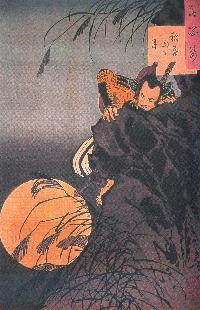BUDO TAIJUTSU

THE BUJINKAN DOJO
The Bujinkan Dojo “Divine Warrior Training Hall” is Grandmaster Masaaki Hatsumi’s international organization for teaching the essence of nine ancient Japanese martial traditions. These traditional schools, or ryu, are:
Gikan Ryu Koppojutsu
Togakure Ryu Ninpo Taijutsu
Kuki Shinden Ryu Happo Biken
Gyokko Ryu Koshijutsu
Koto Ryu Koppojutsu
Kumagakure Ryu Ninjutsu
Shinden Fudo Ryu Dakentaijutsu
Takagi Yoshin Ryu Jutaijutsu
Gyokushin Ryu Ninjutsu
Some of these ryu date back nearly 1,000 years and can be traced through 34 generations of Grandmasters. Three of the ryu are based on the fighting arts and philosophy of Japan’s legendary Ninja Warriors, while some originated with the Samurai Class. All nine ryu retain their original combat essence and warrior skills. The basis of these ryu is known as Budo Taijutsu or “whole body movement.” This concept goes well beyond the idea of simple physical movement. Instead, the goal is to produce a fully developed human being by integrating body, mind and spirit
TRAINING CONCEPTS
Although the techniques involved in Budo Taijutsu number in the thousands, students are not expected to memorize the movements of each technique. Instead, training emphasizes the principles embodied by the technique. This is done using a three- phase approach to training. Beginning stages emphasize understanding of the physical movement, purpose and proper application of the technique. As students progress, more emphasis is placed on allowing the movement to flow naturally within the parameters of the technique. In the final stages, the concept of technique is dropped altogether and movement becomes a natural response to the situation at hand. Thus, a balance between form and function is acquired providing an in depth understanding of the principles embodied within a given technique.
BUDO TAIJUTSU
The art of taijutsu emphasizes the use of the whole body as a unit to provide power within the techniques. Unarmed techniques involve training in breakfalls and rolling (ukemi), striking and kicking (dakentaijutsu) and grappling and counters (jutaijutsu.) Armed techniques involve the use of various traditional and modern weapons. The weapons practiced include but are not limited to:
Kenjutsu: Sword fighting
Bojutsu: Stick fighting
Tantojutsu: Knife fighting
Shurikenjutsu: thrown weapons
Kusari fundo jutsu: rope and chain weapons
Additionally, all weapons are taught as natural extensions of the taijutsu unarmed movements. This eliminates the need to learn a totally new set of movement for each weapon studied.
THE BUJINKAN KAKURE YAMA DOJO
Established in Durham in 1995 by Shidoshi Karl Koch, the Bujinkan Kakure Yama Dojo is an offshoot of the original dojo founded by Sensei Koch at Va. Tech in 1990 and sponsored by Shihan Phillip Legare, founder of the Bujinkan Taka Seigi Dojo. Since 1990, the Bujinkan Kakure Yama Dojo and the Bujinkan Taka Seigi Dojo have continued to support one another and work heavily together to share their understanding of the Bujinkan with dojos across the US. Both the Bujinkan Taka Seigi Dojo and the Bujinkan Kakure Yama Dojo are subsidiaries of the Bujinkan Hombu of Japan and maintain direct contact with Grandmaster Masaaki Hatsumi.
